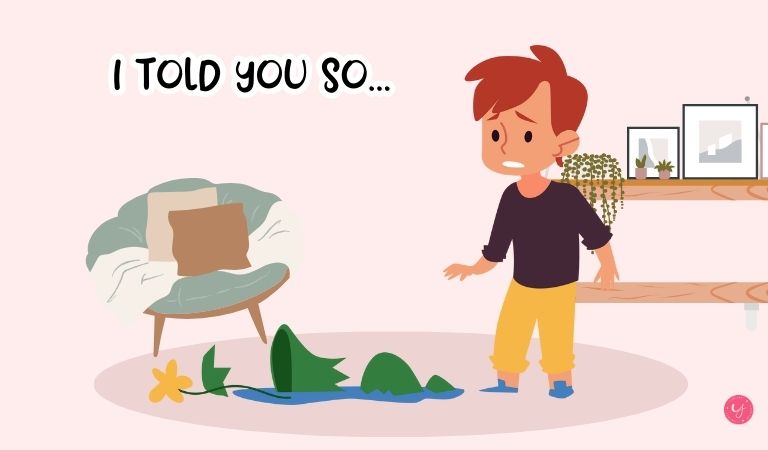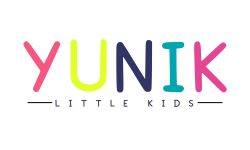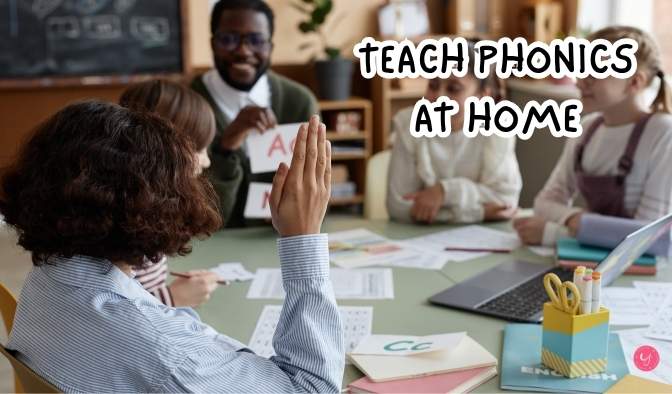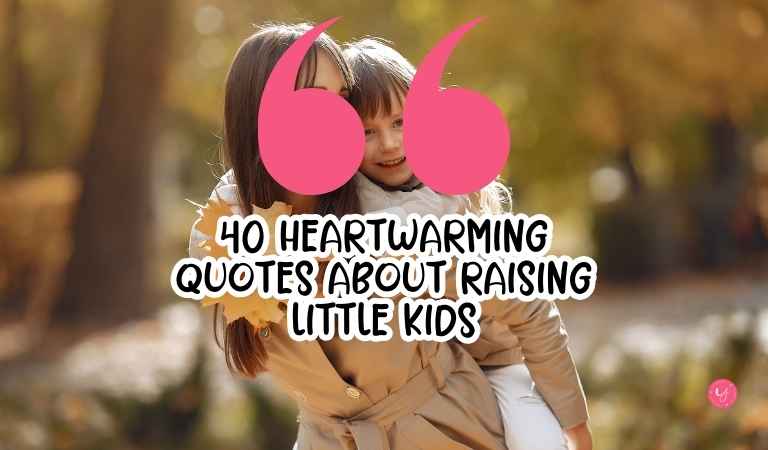Do You Say “I Told You So” to Your Kids Often? Try This Instead

We’ve all been there. You warn your child about something:
- Don’t run indoors
- Don’t play too rough
- Don’t balance your plate on the edge of the table
And then it happens. They trip, something breaks, or the food spills.
And before you know it, out comes the phrase:
“I told you so.”
It’s so tempting to say, isn’t it?
Almost like it’s sitting on the tip of your tongue, waiting to leap out. It’s a natural response, one that feels like a mix of exasperation, validation, and “Why don’t you just listen to me the first time?” But if we’re honest with ourselves, does it really do anything other than make the situation worse?
Let’s unpack why “I told you so” might not be helping and what we can do instead.
Why “I Told You So” Isn’t the Right Thing to Say?
When you say “I told you so” to your child, what you’re really doing—whether you mean to or not—is pointing out their failure. You’re essentially saying, “I was right, you were wrong, and now you’re paying for it.” For kids, that stings.
And let’s face it, it doesn’t feel great when someone says it to us either, does it? Imagine spilling your coffee and your partner casually saying, “Well, I told you to move it away from the edge of the table.” Helpful? Not at all. Annoying? Absolutely.
Kids are no different. When they hear “I told you so,” it doesn’t teach them anything useful. Instead, it shames them and makes them feel small.
It reinforces the idea that their mistakes are something to be embarrassed about, rather than an opportunity to learn. Worse, it can chip away at their trust in you. If every mistake is met with “I told you so,” why would they come to you when something goes wrong in the future?
The other issue is that it doesn’t give them any tools to handle the situation differently next time. Sure, you were right this time, but how do they know what to do if it happens again?
All they learn is that you predicted the outcome, not how they can make better choices moving forward. And isn’t that the point of parenting? To guide them, not gloat when they stumble?
What to Say Instead of “I Told You So”
So, if “I told you so” isn’t the answer, what is? The key is to shift your response from one of blame to one of problem-solving and support.
Instead of making it about what you warned them about, make it about what they can do next. Let me break this down with a few examples.
1. “That didn’t go as planned, did it? What can we do next time?”
This one is my go-to because it’s so simple and neutral. It acknowledges the mistake without rubbing their nose in it. It also gently encourages them to reflect on what happened and think about how they might avoid it in the future.
For example, if your child spills milk after swinging the carton around, you could say, “That didn’t go as planned. Next time, let’s pour it carefully together, okay?”
Notice how it’s not about blaming them or pointing out that you warned them. It’s about working together to fix the problem and finding a better way forward.
This way, they’re learning without feeling ashamed.
2. “It’s okay to make mistakes. Let’s figure this out together.”
Sometimes, what kids need most in the moment is reassurance. They already feel bad—whether it’s because they broke a toy or forgot their homework, they don’t need us to pile on.
Saying, “It’s okay to make mistakes” lets them know that their misstep isn’t the end of the world.
Following it up with, “Let’s figure this out together,” shows them that you’re on their side and willing to help.
For example, if they drop their new toy and it breaks, instead of saying, “I told you not to throw it!” you could say, “It happens. Let’s see if we can fix it or come up with a way to take better care of it next time.”
It’s such a small shift, but it makes a huge difference in how your child feels and how they handle mistakes moving forward.
3. “I see why that happened. How are you feeling about it?”
This one is more about connecting with your child emotionally. Mistakes are frustrating for everyone, especially kids who might not fully understand their feelings yet.
Acknowledging what happened and asking how they’re feeling gives them the space to process those emotions. It also shows that you care about them more than the mistake itself.
For instance, if they fall after running indoors, you might say, “I see why that happened. Are you okay? How are you feeling about what just happened?”
It’s not about the warning they ignored; it’s about making sure they feel seen and supported.
4. “I get why you wanted to do that. Let’s think about a safer way next time.”
Sometimes kids’ mistakes come from curiosity or excitement, not defiance. Maybe they climbed on the counter to reach a snack or ran through the house because they were playing superhero. Instead of scolding, acknowledge their intention and redirect them.
Saying, “I get why you wanted to do that,” validates their feelings, and “Let’s think about a safer way next time” encourages problem-solving.
For example, you could say, “I know you were excited to grab the cookies, but climbing on the counter isn’t safe. Let’s figure out a better way to reach them next time.”
This approach makes them feel understood while still setting boundaries.
Final Thoughts
The next time your child makes a mistake, try to resist the urge to say “I told you so.” I know it’s hard, it feels so natural in the moment, but those words don’t teach or connect. Instead, focus on responses that guide, reassure, and support. Your child will feel less judged, more empowered, and more likely to come to you when they face challenges in the future.




